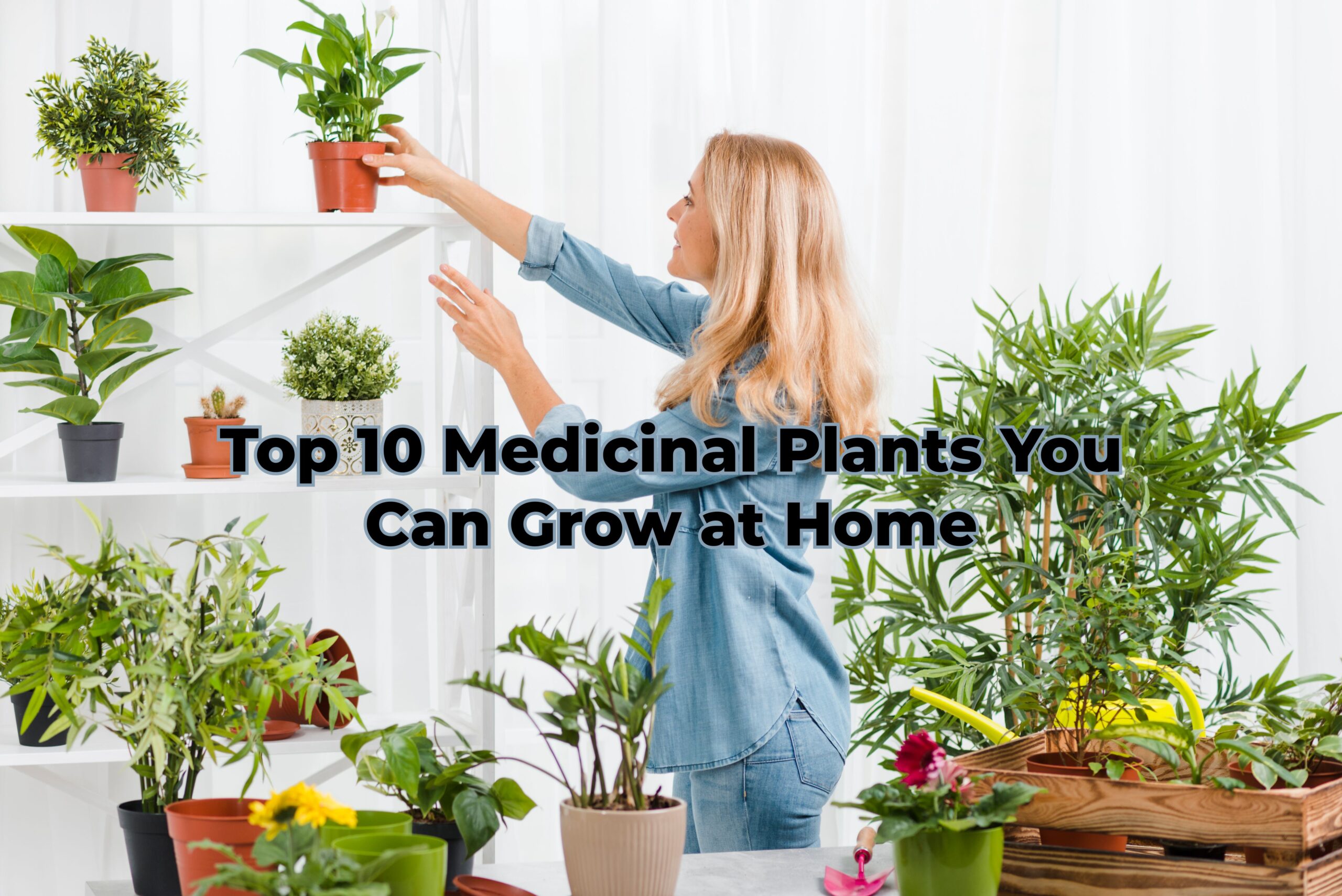Medicinal plants are those that have been used traditionally for their therapeutic properties. These plants contain compounds with medicinal properties that can be utilized to treat various ailments.
In today’s fast-paced world, the allure of natural remedies is stronger than ever. With concerns about synthetic chemicals and their potential side effects, many people are turning to traditional medicinal plants for relief from common ailments. Luckily, you don’t need a sprawling garden or an expert green thumb to cultivate these healing herbs. In this comprehensive article, we’ll explore the top medicinal plants that you can easily grow at home.
Benefits of Growing Medicinal Plants at Home:
Aloe Vera:
Aloe vera, with its spiky leaves filled with gel, is a staple in many households for its remarkable healing properties. It’s a potent remedy for soothing burns, cuts, and minor skin irritations. Simply break off a leaf, extract the gel, and apply it directly to the affected area for instant relief. Aloe vera also boasts anti-inflammatory and moisturizing qualities, making it a versatile addition to your home garden.
Lavender:
Lavender isn’t just a fragrant addition to your garden; it’s a powerhouse of medicinal benefits. Known for its calming properties, lavender is ideal for promoting relaxation and reducing stress and anxiety. You can brew its fragrant flowers into a soothing tea or use lavender essential oil for aromatherapy. Additionally, lavender can aid in relieving headaches and improving sleep quality, making it a must-have in any medicinal garden.
Peppermint (Mentha piperita):
With its refreshing scent and cooling properties, peppermint is more than just a flavouring for your tea; it’s a natural remedy for various ailments. Peppermint tea is excellent for soothing upset stomachs, relieving indigestion, and alleviating nausea. Additionally, peppermint oil applied topically can help relieve tension, headaches, and muscle pain. Easy to grow and propagate, peppermint is a low-maintenance herb that thrives in containers or garden beds.
Ajwain Plant
Similar to the money plant in appearance, the Ajwain plant grows in clusters and has beautifully ridged leaves that require daily trimming. These medicinal plants grow quickly in suitable conditions and can tolerate direct sunlight. The seeds of Ajwain or carom have anti-inflammatory and anti-bacterial properties, which can help with stomach issues like peptic ulcers and indigestion. They also aid in reducing high blood pressure and cholesterol levels.
Chamomile:
Chamomile is renowned for its gentle sedative effects and digestive support. Growing chamomile requires well-drained soil and plenty of sunlight. Harvest the delicate flowers for teas or topical applications to ease stress and promote relaxation.
Echinacea
Echinacea, also known as purple coneflower, is a potent immune booster. This resilient plant can be easily grown in gardens or containers, requiring full sun and moderate watering. Incorporate echinacea into your garden to ward off colds and flu naturally.
Lemon Balm Plant
The lemon leaves and oil are used for medicinal purposes. The oil, extracted from the leaves, is used to treat various conditions such as digestive tract spasms, gastric ulcers, high blood pressure, constipation, diarrhoea, flatulence, heartburn, dyspepsia, indigestion, nausea, vomiting, nervousness, rheumatic pains, sore throats, and toothaches. Additionally, the oil is employed for its germ-killing properties and as a mild astringent.
Tulsi or the Holy Basil Plant:
Tulsi, or the Holy Basil plant, is one of the most commonly found in the list of medicinal plants for homes and holds great significance in Ayurveda. It has medicinal properties and is revered for improving respiratory health, reducing stress, and strengthening the immune system. Tulsi leaves are commonly used in herbal teas and Ayurvedic remedies.
Neem tree
The neem tree, scientifically known as Azadirachta indica, is a tropical evergreen tree native to the Indian subcontinent Cultivating neem trees at home allows you to harness the plant’s medicinal properties for various purposes, including skincare, hair-care, pest control, and overall health and wellness.
Rosemary

Rosemary is an aromatic evergreen herb native to the Mediterranean. The herb has been praised for centuries for its medicinal properties. Rosemary was traditionally used to reduce muscle pain, enhance memory, strengthen the immune and circulatory systems, and stimulate hair growth.
How to Grow Medicinal Plants at Home
Now that you’ve selected your medicinal plants, it’s time to learn how to cultivate them effectively at home.
Choosing the Right Location and Soil
Most medicinal plants prefer well-drained soil and plenty of sunlight. Ensure your chosen location receives adequate sunlight throughout the day.
Planting and Care Tips
Follow planting instructions specific to each plant and provide regular watering and fertilization as needed. Monitor for pests and diseases and take appropriate action if necessary.
Harvesting and Storage
Harvest medicinal plants when they are at their peak potency. Dry herbs thoroughly before storing them in airtight containers away from direct sunlight.
Conclusion
Growing medicinal plants at home offers a sustainable and accessible way to harness the healing power of nature. Whether you have a sprawling garden or a cosy balcony, cultivating medicinal plants allows you to take control of your health and well-being. Embrace the therapeutic benefits of nature by incorporating these top 10 medicinal plants into your home garden.
FAQs
1. How much sunlight do medicinal plants need?
Medicinal plants vary in their sunlight requirements, but most prefer full sun to partial shade for optimal growth and potency.
3. How often should I water medicinal plants?
The watering needs of medicinal plants depend on factors like climate and soil conditions. Generally, water them when the soil feels dry to the touch.
4. Are medicinal plants safe for pets?
While many medicinal plants are safe for pets, some can be toxic if ingested. It’s essential to research each plant’s safety and keep them out of reach of pets.
5. How do I harvest and store medicinal plants?
Harvest medicinal plants when they are at their peak potency, usually in the morning after dew has dried. Store them in a cool, dry place away from direct sunlight to preserve their efficacy.


This post has really cleared things up for me.